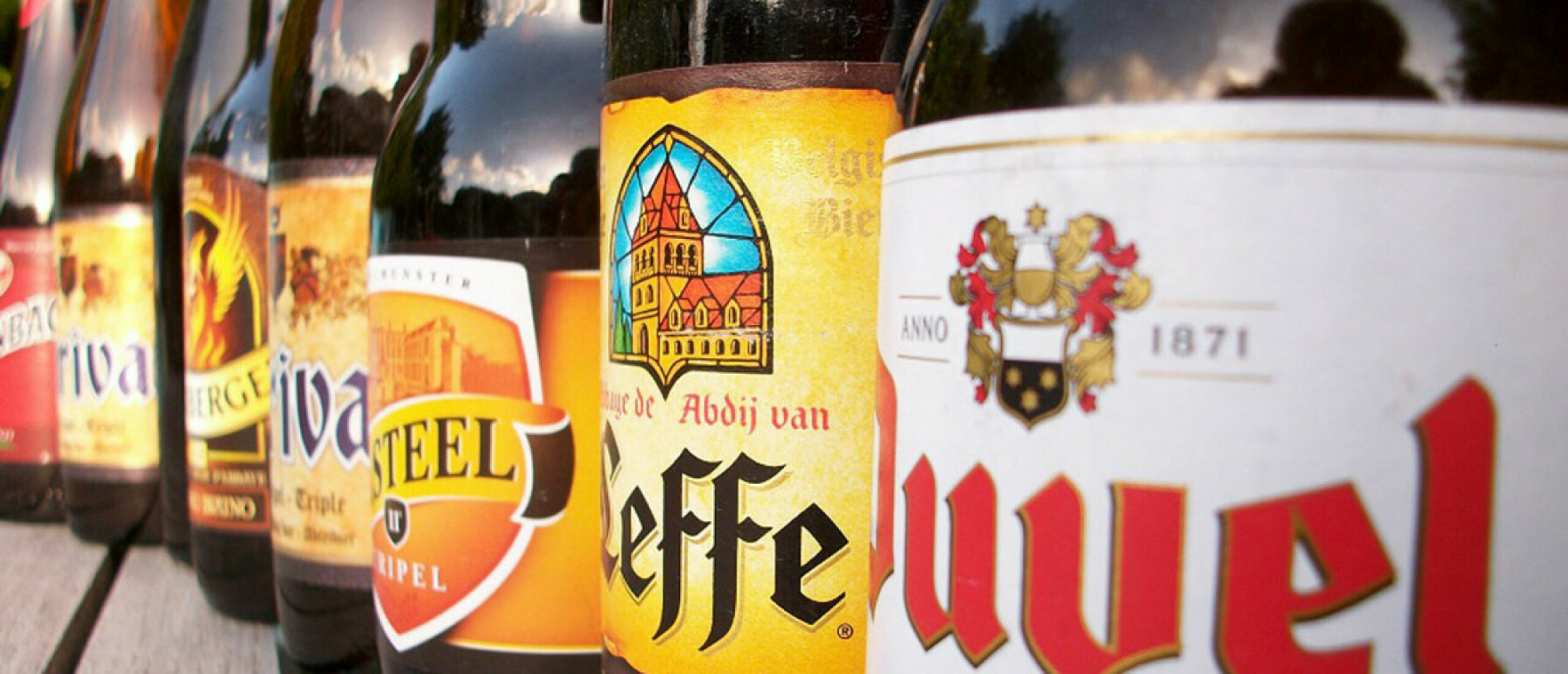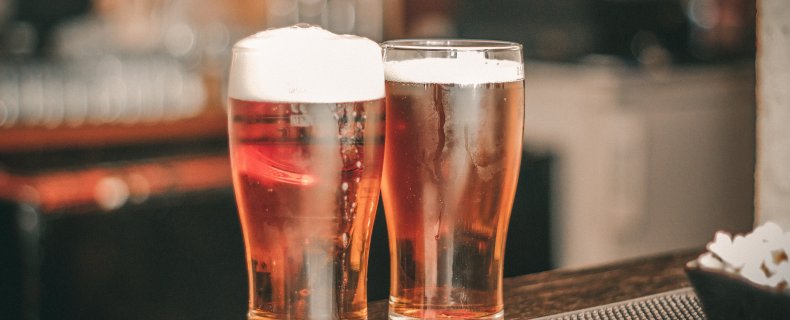Introduction to Belgian Beers
History of Belgian Beer
Belgium has a long and rich history of brewing beer, dating back to the Middle Ages when monasteries were the primary producers of beer. These monastic breweries were known for their unique and flavorful beers, which were brewed using local ingredients and traditional methods. Over time, brewing became a popular trade in Belgium, and many small breweries emerged throughout the country. Today, Belgian beer is renowned for its diversity and complexity, with over 1,500 different varieties available. The country's brewing traditions have been passed down through generations, and many of the classic Belgian beer styles, such as Trappist ales and lambics, are still brewed using traditional methods.
What Makes Belgian Beer Unique
Belgian beer is unique for several reasons. Firstly, it is brewed using a wide range of ingredients, including fruits, spices, and herbs, which give it a distinct flavor profile. Secondly, Belgian brewers have a long tradition of using wild yeasts and bacteria to ferment their beers, resulting in complex and often sour flavors. Finally, Belgian beer is often bottle-conditioned, meaning that it undergoes a secondary fermentation in the bottle, which can lead to a higher level of carbonation and a longer shelf life. All of these factors contribute to the rich and diverse world of Belgian beer, which is beloved by beer enthusiasts around the globe.
Popular Belgian Beer Styles
Belgium is known for producing a wide variety of beer styles, each with its own unique flavor and characteristics. Some of the most popular Belgian beer styles include Belgian Dubbel, Belgian Tripel, Belgian Strong Ale, Belgian Witbier, and Belgian Saison. Belgian Dubbel is a dark, malty beer with notes of caramel and dark fruit, while Belgian Tripel is a strong, golden ale with a spicy and fruity flavor. Belgian Strong Ale is a high-alcohol beer with a complex flavor profile, and Belgian Witbier is a light, refreshing beer with hints of coriander and orange peel. Finally, Belgian Saison is a farmhouse-style ale with a dry, spicy finish. No matter what your taste preferences are, there is sure to be a Belgian beer style that you will love.
Belgian Beer Styles
Belgian Pale Ale
Belgian Pale Ale is a style of beer that is known for its balance between malt and hop flavors. It is typically a light to medium-bodied beer with a golden to amber color. The aroma is often described as fruity and floral, with a hint of spice. Belgian Pale Ales are often brewed with Belgian yeast strains, which can add a unique complexity to the beer. Some popular examples of Belgian Pale Ales include Leffe Blonde, Duvel, and Orval. These beers are perfect for those who enjoy a refreshing and flavorful beer without the heaviness of a darker ale.
Saison
Saison, also known as farmhouse ale, is a style of beer that originated in the French-speaking region of Belgium. Traditionally brewed in the winter months, this beer was meant to be consumed by farm workers during the summer harvest season. Saisons are known for their fruity and spicy notes, with a dry finish and high carbonation. They are typically brewed with a combination of malted barley, wheat, and sometimes oats, and are often spiced with coriander, orange peel, and other herbs. Saisons can range in alcohol content from 5% to 9%, making them a refreshing and flavorful option for any beer lover.
Dubbel
Dubbel is a style of Belgian beer that originated in the Trappist monasteries of Belgium. It is a dark, malty beer with a rich, complex flavor profile. Dubbels are typically brewed with dark malts, which give the beer its deep brown color and caramel-like sweetness. They also often feature notes of dark fruit, such as raisins or plums, as well as spices like clove or nutmeg. Dubbels are typically medium-bodied and have a moderate alcohol content, making them a great choice for sipping and savoring. Some popular examples of Dubbel include Westmalle Dubbel and Chimay Red.
Tripel
Tripel is a strong, golden ale that is typically brewed with three times the amount of malt as a standard Belgian ale. This results in a higher alcohol content, usually around 8-10%. Tripels are known for their complex flavors and aromas, which can include notes of fruit, spice, and yeast. They are often described as being sweet and malty, with a dry finish. Some popular examples of Belgian tripels include Westmalle Tripel, Chimay Cinq Cents, and La Fin du Monde. Tripels are best enjoyed in a tulip glass, which helps to enhance their aroma and flavor.
Quadrupel
Quadrupel is a strong, dark ale that is typically brewed with a high alcohol content. It is known for its complex flavors and aromas, which can include notes of dark fruit, caramel, and spices. Quadrupels are often aged in oak barrels, which can add additional layers of flavor and complexity. These beers are best enjoyed in small quantities, as their high alcohol content can quickly catch up with you. Some popular examples of Belgian quadrupels include St. Bernardus Abt 12, Rochefort 10, and Westvleteren 12.
Lambic
Lambic is a unique style of beer that is only brewed in the Pajottenland region of Belgium. It is made using spontaneous fermentation, which means that the beer is left to ferment naturally using wild yeast and bacteria that are present in the air. This gives lambic its distinct sour taste and aroma. Lambic is often blended with other beers to create gueuze, a popular style of beer in Belgium. It is also used as a base for fruit beers, such as kriek (cherry) and framboise (raspberry). Lambic is a must-try for any beer enthusiast looking to experience the true flavors of Belgium.
Flanders Red Ale
Flanders Red Ale is a unique style of beer that originated in the Flanders region of Belgium. It is known for its deep red color, tart and sour flavor, and complex aroma. The beer is aged in oak barrels for up to two years, which gives it a distinct woody flavor. Flanders Red Ale is often blended with younger beers to balance out the sourness and create a more complex flavor profile. This beer is not for everyone, but if you enjoy sour beers, Flanders Red Ale is definitely worth trying. Some popular examples of Flanders Red Ale include Rodenbach Grand Cru and Duchesse de Bourgogne.
Witbier
Witbier, also known as "white beer," is a refreshing and light beer that is perfect for warm weather. It is brewed with a high percentage of wheat, which gives it a hazy appearance and a smooth mouthfeel. The addition of coriander and orange peel during the brewing process gives it a citrusy and spicy flavor. Witbier is typically served with a slice of orange to enhance the citrus notes. This beer style originated in the Flemish region of Belgium and has gained popularity worldwide. Some popular examples of Witbier include Hoegaarden and Blanche de Bruxelles.
Belgian Strong Ale
Belgian Strong Ale is a style of beer that is known for its high alcohol content, complex flavors, and rich history. These beers are typically brewed with a combination of malts, hops, and spices, and are often aged for several months to develop their unique character. Some of the most popular Belgian Strong Ales include Duvel, Delirium Tremens, and Chimay Blue. These beers are best enjoyed in a tulip glass, which helps to enhance their aroma and flavor. If you're looking for a beer that packs a punch and is full of flavor, then Belgian Strong Ale is definitely worth trying.
Trappist Beer
Trappist beer is a type of beer that is brewed by Trappist monks within the walls of their monastery. There are only 14 Trappist breweries in the world, and six of them are located in Belgium. These breweries produce some of the most sought-after and revered beers in the world. Trappist beers are known for their complexity, depth of flavor, and high alcohol content. They are often bottle-conditioned, which means that they undergo a secondary fermentation in the bottle, resulting in a natural carbonation and a unique flavor profile. Some of the most popular Trappist beers from Belgium include Westvleteren, Chimay, and Orval.
Brewing Belgian Beer
Ingredients Used in Belgian Beer
Belgian beers are known for their unique and complex flavors, which are achieved through the use of high-quality ingredients. The most important ingredient in Belgian beer is malted barley, which provides the sugars that are fermented into alcohol. Belgian brewers also use a variety of other grains, such as wheat and rye, to add complexity to their beers. Hops are used to balance the sweetness of the malt and provide bitterness and aroma. Belgian brewers often use a wide range of hop varieties, including both European and American varieties. Finally, Belgian beers are fermented with a variety of yeast strains, which contribute to the unique flavors and aromas of each beer. Some Belgian brewers even use wild yeast strains, which can create sour or funky flavors in the beer.
Brewing Techniques
Belgium is known for its unique brewing techniques that have been passed down for generations. One of the most notable techniques is the use of wild yeast strains, which give Belgian beers their distinct flavors and aromas. Another technique is the process of bottle conditioning, where the beer undergoes a secondary fermentation in the bottle, resulting in a natural carbonation and complex flavors. Belgian brewers also use a variety of malts and hops, often blending different types to create a balanced and flavorful beer. Overall, the brewing techniques used in Belgium are a key factor in the country's reputation for producing some of the world's best beers.
Fermentation and Aging
Belgian beers are known for their unique fermentation and aging processes. Many Belgian breweries use open fermentation, which allows wild yeast and bacteria to enter the beer and create complex flavors and aromas. After fermentation, Belgian beers are often aged in oak barrels, which can impart additional flavors and aromas such as vanilla, coconut, and tannins. Some Belgian beers are also bottle-conditioned, meaning that a small amount of yeast is added to the bottle before it is sealed, allowing for further fermentation and carbonation. These processes contribute to the distinct character of Belgian beers and make them a favorite among beer enthusiasts.
Bottle Conditioning
Bottle conditioning is a process where beer is carbonated naturally in the bottle. This is achieved by adding a small amount of sugar and yeast to the beer before it is bottled. The yeast consumes the sugar, producing carbon dioxide, which is trapped in the bottle, carbonating the beer. This process can take anywhere from a few days to several weeks, depending on the style of beer and the temperature at which it is stored. Bottle conditioned beers tend to have a more complex flavor profile and a softer, creamier mouthfeel compared to their carbonated counterparts. It is important to pour bottle conditioned beers carefully, leaving the sediment at the bottom of the bottle to avoid a cloudy appearance and a gritty texture.
Tasting Belgian Beer
Serving Temperature
Serving temperature is crucial when it comes to enjoying Belgian beers to their fullest potential. Generally, lighter beers such as witbiers and saisons are best served at cooler temperatures ranging from 40-50°F (4-10°C). On the other hand, darker and stronger beers like dubbels and quadrupels should be served slightly warmer at around 50-55°F (10-13°C) to allow their complex flavors to fully develop. It's important to note that serving temperature can greatly affect the taste and aroma of a beer, so it's worth taking the time to properly chill or warm your brew before enjoying it.
Glassware
Belgian beer is not just about the taste, but also about the presentation. The right glassware can enhance the aroma, flavor, and appearance of the beer. Belgian beers are typically served in their own unique glassware, which is designed to showcase the beer's characteristics. For example, a Belgian Dubbel is served in a chalice-shaped glass, while a Belgian Tripel is served in a tulip-shaped glass. The shape of the glass can also affect the head retention and carbonation of the beer. It is important to choose the right glassware to fully appreciate the complexity of Belgian beers.
Pairing Belgian Beer with Food
Belgian beers are known for their complex flavors and aromas, making them a perfect match for a wide range of foods. When it comes to pairing Belgian beer with food, there are a few general rules to follow. For example, lighter beers such as witbiers and saisons pair well with seafood, salads, and light dishes, while darker beers like dubbel and quadrupel are better suited for hearty stews, roasted meats, and strong cheeses. Belgian beers with fruity or spicy notes can also complement spicy dishes, while sour beers can be paired with rich, fatty foods to cut through the richness. Ultimately, the key to successful beer and food pairing is experimentation and finding the perfect balance between the flavors of the beer and the dish.
Common Flavors and Aromas
Belgian beers are known for their complex and unique flavors and aromas. Some of the most common flavors and aromas found in Belgian beers include fruity notes such as banana, apple, and pear, as well as spicy and herbal notes like coriander, clove, and pepper. Belgian beers also often have a distinct yeast character, which can impart flavors of bread, dough, and even bubblegum. Additionally, many Belgian beers have a slight sourness or tartness, which can range from subtle to pronounced. These flavors and aromas are a result of the specific yeast strains and brewing techniques used in Belgian beer production, making each beer a truly unique experience.
Visiting Belgian Breweries
Breweries to Visit in Brussels
Brussels is home to some of the most iconic breweries in Belgium. One of the most popular breweries to visit is Cantillon Brewery, which has been producing traditional lambic beers since 1900. Another must-visit brewery is Brasserie de la Senne, which is known for its modern take on Belgian beer styles. For those looking for a unique experience, the Brussels Beer Project offers a range of experimental beers that are brewed using unconventional ingredients. Other notable breweries to visit in Brussels include Brasserie de la Ville, En Stoemelings, and Brasserie de l'Ermitage. With so many great options to choose from, beer enthusiasts are sure to find something to suit their tastes in Brussels.
Breweries to Visit in Bruges
Bruges is a picturesque city in Belgium that is famous for its medieval architecture, canals, and of course, its beer. There are several breweries in Bruges that are worth visiting, including De Halve Maan, which is the only remaining brewery in the city center. Visitors can take a tour of the brewery and learn about the history of beer-making in Bruges. Another popular brewery is the Bourgogne des Flandres, which is known for its traditional Flemish red ale. The brewery offers guided tours and tastings, as well as a cozy pub where visitors can enjoy a pint of their favorite beer. Other notable breweries in Bruges include the Brouwerij Fort Lapin and the Brouwerij De Leite, both of which offer unique and flavorful beers that are worth trying.
Breweries to Visit in Antwerp
Antwerp is a city that is rich in history and culture, and it is also home to some of the best breweries in Belgium. One of the most popular breweries in Antwerp is De Koninck Brewery, which has been producing beer since 1833. Visitors can take a tour of the brewery and learn about the history of the brewery and the brewing process. Another popular brewery in Antwerp is Het Pakhuis, which is located in a historic building in the city center. This brewery offers a variety of beers, including their signature beer, the Antwerpse Bruine. Other breweries to visit in Antwerp include Seefbier Brewery, Antwerpse Brouw Compagnie, and Brouwerij 't Pakhuis. Each of these breweries offers a unique experience and a chance to taste some of the best beers in Belgium.
Breweries to Visit in Ghent
Ghent is a city that is steeped in history and culture, and it is also home to some of the best breweries in Belgium. One of the most popular breweries in Ghent is the Gruut Brewery, which is known for its unique beers that are brewed using a blend of herbs instead of hops. Another popular brewery in Ghent is the De Halve Maan Brewery, which has been producing beer since the 16th century. Visitors to this brewery can take a tour of the facilities and learn about the history of beer production in Ghent. Other notable breweries in Ghent include the Dok Brewing Company, the Gentse Stadsbrouwerij, and the Liefmans Brewery. No matter which brewery you choose to visit in Ghent, you are sure to be impressed by the quality and variety of the beers on offer.
Conclusion
Why Belgian Beer is Worth Trying
Belgian beer is worth trying for a multitude of reasons. Firstly, the country has a rich brewing history dating back centuries, resulting in a diverse range of beer styles and flavors. Secondly, Belgian brewers are known for their unique and innovative brewing techniques, such as using wild yeast strains and aging beer in oak barrels. This results in complex and flavorful beers that are unlike anything else in the world. Additionally, Belgian beer culture is deeply ingrained in the country's social fabric, with many bars and cafes specializing in serving a wide variety of local brews. Finally, Belgian beer is often brewed in small batches, using high-quality ingredients, resulting in a product that is both artisanal and authentic. Overall, trying Belgian beer is a must for any beer lover looking to expand their palate and experience the best that the beer world has to offer.
Tips for Enjoying Belgian Beer
When it comes to enjoying Belgian beer, there are a few tips to keep in mind. First, make sure to serve the beer at the appropriate temperature. Most Belgian beers are best enjoyed at slightly warmer temperatures than other beers, so be sure to check the recommended serving temperature for each beer. Additionally, take your time when sipping on Belgian beer. These brews are often complex and full of flavor, so savoring each sip can help you fully appreciate the beer. Finally, consider pairing your Belgian beer with food. Many Belgian beers are great for pairing with cheese, chocolate, and other rich, flavorful foods, so experiment with different combinations to find your perfect match.
Where to Find Belgian Beer
Belgian beer can be found in many places around the world, but some locations are particularly known for their selection. In Belgium itself, there are countless bars and cafes that specialize in serving local brews. Brussels, Bruges, and Ghent are all popular destinations for beer lovers. Outside of Belgium, cities like Amsterdam, London, and New York City have bars and restaurants with extensive Belgian beer menus. Additionally, many specialty beer shops and online retailers offer a wide variety of Belgian beers for purchase. No matter where you are, it's likely that you can find a delicious Belgian beer nearby.
Now that you have a better understanding of Belgian beers, it's time to put your knowledge to the test. Head over to https://www.foodbelgium.com to explore their extensive collection of Belgian beers and find your new favorite brew. With their wide selection and expert curation, you're sure to discover something that suits your taste buds. Don't wait any longer, take the next step and start your Belgian beer journey today!






